There are so many native wild edibles to pick and choose from in summer. You can find and identify them effortlessly and safely in most state forests.
However, many nature reserves and state parks do not allow foraging, as some plant species are protected. Make sure of park rules and regulations before you get the family together to go hunting and gathering.
Be courteous and prevent altercations by getting permission before you start harvesting plants on private property. You want the outing to be enjoyable.
Take note that it is an offense to uproot any wild plant if you do not have the landowner’s permission and that foraging is not allowed on a Site of Special Scientific Interest.
Do not consume plants treated with herbicides, fertilizer, and pesticides. Also, steer clear of those that have been nibbled by wildlife or have bird droppings on them. To be safe, do not collect if you are in doubt.
Identifying Easily Accessible Edible Wild Foods
It is vital to make a positive identification before you pick since many edibles have poisonous lookalikes.
Look for several features that correspond to the plant’s traits to confirm you have the right one in your sights. Take a good look at the stem, leaf pattern, flower, and fruit.
Related: 8 Edible Backyard Plants And Their Poisonous Lookalikes
Purslane
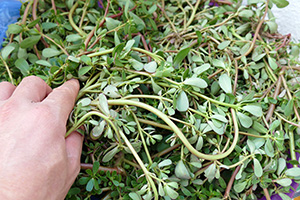 Purslane is a leafy, green vegetable with a reddish stem, many oval-shaped, succulent, fleshy, small leaves, and yellow flowers.
Purslane is a leafy, green vegetable with a reddish stem, many oval-shaped, succulent, fleshy, small leaves, and yellow flowers.
The stalks branch out from a single taproot and lie flat on the ground. They occasionally develop mats of leaves.
You can find this entirely edible plant in parking lots and on sidewalks and can eat it raw or steamed. It is delicious when eaten raw.
Add the greens to a sandwich, put them in a salad and use them as an ingredient in soup or a topping on your tacos. Overcooking makes it slimy, so sauté it gently instead.
Dandelion
Dandelion is extremely easy to find and identify and filled with minerals, antioxidants, and vitamins. The weed does not have a woody stem, is fleshy, and withers away after each growing season.
It grows from an undivided taproot and has deeply toothed hairless leaves that extend from the plant’s ground-level crown in a rosette shape. The leaves are lance-shaped, irregularly lobed, narrow, and long. The lobed tips may point towards the crown and appear opposite each other.
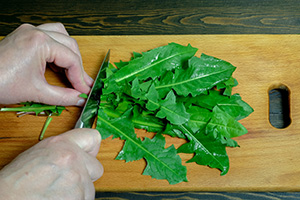
You can eat all its parts in a salad, top a pizza, add it to a quiche lightly cooked, or make cookies, cakes, wine, and tea with the flowers.
The piquant greens are remarkably nutritious. A milky substance seeps out of the leaves, roots, and stems when you break them.
Pick the yellow flowers at the same time and cook them immediately. They do not do well when refrigerated. Dandelion stems may be poisonous to children and can be harmful if you eat large quantities.
Chickweed
Chickweed flourishes throughout the summer, and you can identify them by their small, white, star-shaped flowers with elongated petals that blossom in mid-summer. It grows low to the ground and has a hairy stem.
This broadleaf plant sports wide, egg-shaped leaves with pointy tips and smaller veins branching from the big vein that runs down the center.
The plant has several medicinal uses. People use it to treat vitamin C deficiency or scurvy, muscle and joint pain, psoriasis, asthma, blood disorders, and bowel problems such as constipation.
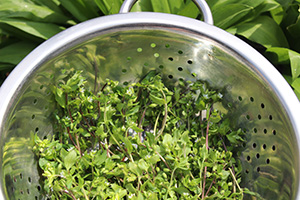
The leaves have a mild flavor, and you can add them to cooked vegetable dishes, stir-fries, stews, soups, and pasta.
Eat the raw flowers, stems, and leaves – in moderation to prevent stomach upsets – in salads, green drinks, and sandwiches.
Remove all the leaves, root ends, and twigs and use the leafiest, greenest parts. Gently dry them with paper towels after giving them a thorough rinsing in a colander. Bunch the bits together and chop into a confetti texture.
Wild Berries
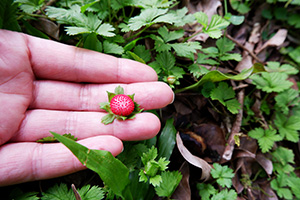
North American wild berries include thimbleberries, dewberries, black and red raspberries, gooseberries, huckleberries, and blueberries.
Strawberries are typically ready for harvest over three to four weeks from mid-June, when the whole fruit is red.
Most other types mature in mid-summer, whereas solid-core blackberries regularly ripen in late August and September.
Blackberry bushes have thorns, white flowers and grow tall. The wild black raspberry looks like a blackberry, but it is sweeter, smaller, and hollow inside.
State parks in most states allow the public to pick wild berries for personal use. They contain antioxidants, minerals, and vitamins, which are beneficial to your health.
Mulberries and the tiny, deep purple elderberries that ripen in late summer – and have powerful antiviral properties – are the most nutrient-dense.
Related: If You See This Berry, You May Want To Harvest It
Pawpaws
Pawpaws are native to the eastern, mid-western, and southern United States. It is North America’s largest native edible fruit. You can find them growing from New York south to northern Florida and east Texas and west to southeastern Nebraska.
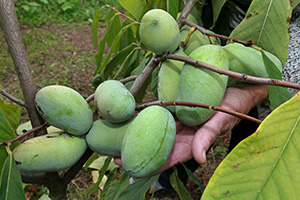
The tree produces a green yellowish, and orange-colored fruit between three and six inches long. The flesh is pale to bright yellow, and the seeds are shiny dark brown. The leaves are large, shaped like a teardrop, long, and plain. You can identify the tree by the soft, black, paintbrush-tipped bud at the leaf base.
Look for them in the understory of well-drained, fertile, deep bottomland, hilly uplands, and woodlands where they grow approximately 20 to 30 feet tall.
The fruit has a tropical, sunny flavor that incorporates hints of banana, mango, and citrus and a floral, yeasty aftertaste that reminds you of unfiltered wheat beer.
Make a smoothie with pawpaw, berries, oranges, and apples together with fresh ginger, or create a delicious tropical fruit salad by adding banana, mango, and pineapple to the mix.
Coastal Edibles
The Native Americans left the shells of marine invertebrates behind in their shell heaps.
Among them are the tiny bivalve mollusks you can find beneath surf-zone sand – called coquina clams – small snails or periwinkles that inch up and down marsh grasses and whelks, the large marine snails that live in marshes and the ocean.
Rangia clams favor water with lower salt content, such as the North Carolina sounds. Old-timers and Native Americans also ate coastal plants.
Sea Lettuce has bright green, wavy blades that look like lettuce.
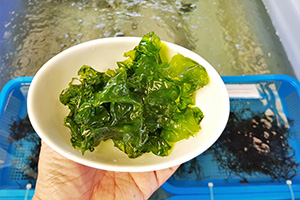
It is rich in iron and fiber and contains vitamins A, B1, and C, plus calcium, sodium, magnesium, and potassium. It grows fast during the spring and early summer. Eat it raw in salads, gradually dry it in the oven, crumble it into sauces and soups, use it as a seasoning, or make sea lettuce squares.
You will find the annual or perennial trailing wild bean in meadows, open woods and fields, sandy soil, and dune areas. It flowers between July and October and is native to the eastern US and Canada.
Related: The Map That Shows You The Edible Trees In Your Neighborhood
The pink-purple pea-like flowers – that fade to a creamy yellow – have steadily curving keel petals and seed pods that look like green beans.
The vines can grow up to three meters long, and there is soft down on the cylindrical pods (that can grow up to four inches long), stems, and trifoliate, fiddle-shaped leaves.
The Native peoples used it as medicine for warts, poison ivy irritation, typhoid, and food. You can eat the roots boiled and mashed, sautéed, or in a stir-fry with other vegetables.
Shell and roast or simmer them as you would peas. Its nutritional make-up is similar to that of the cultivated or common green bean.
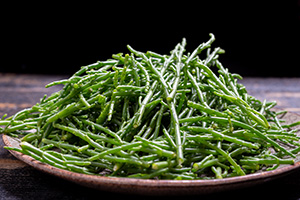 You can pickle glasswort or pickleweed stems, chop it into a cheese ball, or put it in a salad to add a crunchy, salty chew.
You can pickle glasswort or pickleweed stems, chop it into a cheese ball, or put it in a salad to add a crunchy, salty chew.
The succulent, low-growing, relatively small plant with jointed stems lives in lower salt marshes.
It is bright green in the summer – turning red or purple in the fall – with tiny, scale-like, unusually shaped leaves that give the stems a leafless appearance.
Desert Edibles
The Sonora eco-region covers large areas of the south-western third of Arizona and small parts of south-eastern California. According to botanist and urban forager Mark Lewis, the Sonora Desert houses over 1000 edible plants.
Gluten-free Amaranth is a summer-, or fall annual or perennial “weed” or leaf-vegetable, pseudo-cereal, grain, or quinoa-like seed that grows along roadsides and in alleys and cracks in built-up areas.
There are approximately 75 different species that share characteristics but vary regarding stem, leaf, and flower color in the US. Pigments may fluctuate from maroon to crimson.
Related: 79 Edible Flowers in North America (with Pictures)
They grow longitudinally to between three and eight feet and have a fibrous, succulent, hollow stem containing grooves and leaf-like structures when mature.
They have densely packed, slim, cylindrical, often drooping flower spikes or clusters with either none or unobtrusive petals.
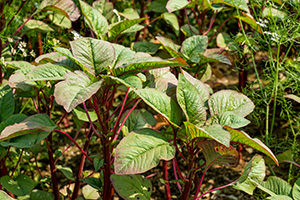
The edible amaranthus tricolor has red, orange, green, and yellow leaves.
The seeds, stems, flowers, and leaves of most species are edible, though some are better for eating. The plant is high in nutritional value. The seeds contain high calcium and protein levels.
The leaves comprise more iron than spinach and supply calcium, magnesium, lysine, fiber, B6, and antioxidants.
You may cook the leaves and use them in quiches, pesto, stews, and soups or as a green side dish or topping. Use the yellowish, tiny, versatile seeds as a breakfast cereal. Boil, roast, pop, or grind them into flour.
They are crunchy and have a sweet, nutty taste. Replace boiled or raw spinach with amaranth leaves. Pick them young before the plant flowers for use in salads.
You can eat almost all Cacti fruits as they are nutritious and flavorsome.
Prickly pear fruits are sweet when red. However, wear thick gloves and protective clothing when you harvest them. Use a pair of tongs and roast them lightly over an open flame to remove the barbed bristles. Peel the skin off and enjoy the delicious fruit. The seeds are too hard to chew, so spit them out or chew around them.
The white (or pink) fleshed pitahaya dragon fruit is delicious when chilled. It contains tiny black seeds, and you can eat the flesh – but not the skin – raw, put it in smoothies, or make sorbet. You can cook the unopened flower buds as you would a vegetable.
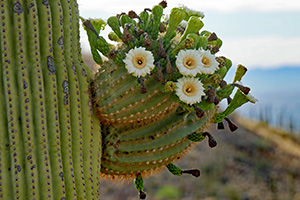 The saguaro cactus is the tallest in North America, which means you need a 15 to 30 feet long pole to knock the fruits off the top.
The saguaro cactus is the tallest in North America, which means you need a 15 to 30 feet long pole to knock the fruits off the top.
The two to three inches long, round, scaly fruits ripen in June and split open to expose the bright red flesh with many tiny black seeds.
Separate the fruit from the husk, soak the pulp and seeds in hot water for three hours, mash it by hand in the water, boil the mixture for two hours, strain to remove the pulp and seeds, simmer the liquid to a thick syrup and make wine, fruit rolls, or jam.
Apart from the thorny outer skin, you can eat almost all of the barrel cactus; the fruits that look like waxy, yellow, skinless pineapple, the flower buds, inner flesh, seeds, and even the roots.
The fruits are easy to pick, and you can eat them raw. They taste much like lemons and have a nutty flavor.
Harvest them when they are bright yellow, between late November and March. Gather the buds – that look like artichokes – in early to mid-summer and brine or pickle them. All these cacti are high in fiber, low in calories, and good sources of vitamins A and C.
That’s Not All
There are too many edible wild summer foods to discuss in this article.
You may want to try wood sorrel – another garden weed – wild grapes that all have three-lobed, large, serrated leaves, cattail spikes, figs, and bolete-, lion’s mane-, and hedgehog mushrooms.
You can also look for milkweed flower buds and fruits and crab apples. Prickly pears, black and English walnuts, pine nuts, and chestnuts are available in August and September.
Foragers have many choices during summertime, so take your guidebook, containers, gloves, scissors, a bottle of water, and enjoy nature’s bounty.
You may also like:
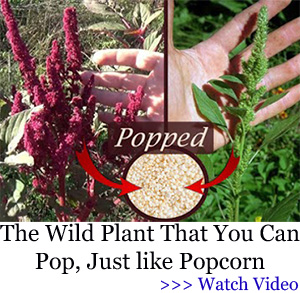 One-Week Meal Plan From The Great Depression
One-Week Meal Plan From The Great Depression
How To Make Bark Bread From A Tree That Grows On Almost Every Street in America (Video)
10 Great Depression Era Strategies For Saving Money
Why Do Government Officials Want To Ban Ham Radio? It’s Already Begun In California

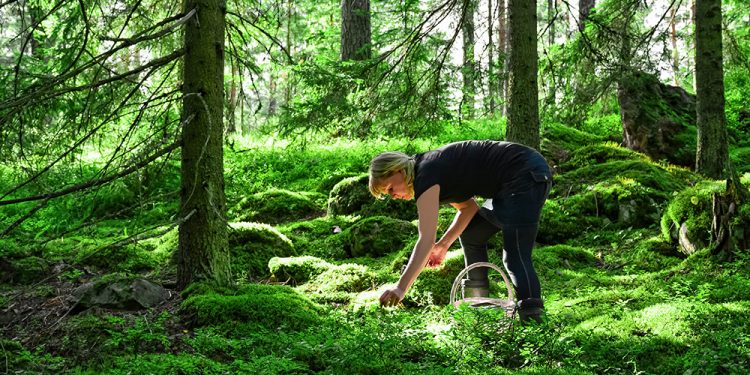













Just added sorrel this is spring to my herb garden with the intent to try a few French recipes that call for it! Wonder if I could use wood sorrel now as a substitute.
I liked this article.
I think it is a great place to start. Grab a good book on your area and go out and look about. See what’s in your neck of the woods.
I especially liked the foraging on the coast portion. So many many things in the ocean, bay, sound, etc to eat. Should never go hungry. Just have to know what you are looking at .
Thanks for the good read.
Peace,
MadFab
I just planted my Papa trees, Can’t wait till they bare fruit.
I thought when I read the article that the saguaro cactus was protected so I went on line to check out my suspicion:
“The saguaro is one of many plants in Arizona protected by the Native Plant Protection Act, and within national park lands, the removal of any plant is illegal. Also, all land in the state is owned by somebody whether it is federal, state, tribal, or private.”
Another article said removal of any part of the plant was included in the Native Plant Protection Act.
Of course, in a world without rule of law, eating saguaro fruit to keep from starving is a different matter.
Before that happens if you want to harvest saguaro fruit, I would highly recommend that you receive WRITTEN permission before doing so. Make sure you get the name, rank and serial number of the person giving you that permission.
That is a reference that will bring back memories only to very old vets.
LCC: Federal owned sahuaro is for the critters. On ranches and reservations, it’s usually harvested for sale. Privately owned land, do as you will to the plants–around here they grow so thick you have little choice but to bulldoze or sell them. There are places where they outnumber mesquite! And, tomorrow, early mesquite needs to be picked. We get a little rain and it’s in bloom, again. niio
LCC – One has to believe that those rules about foraging apply these days in some form or fashion to most all of the US. The only place I know where one is actually welcomed to roam and forage is in Scandinavia. This time of year, if I have a hankering for some cactus, i just go over to the local grocery store where all sorts of bit and pieces are available for sale. Saguaro cactus fruit is available for $1.99 a pound.
CC: One can buy saguaro cactus from local nurseries but it is saguaro that was harvested decades ago and is being grown commercially (at least that is the nurseries’ story and they are sticking with it.)
I have never tried to harvest on Bureau of Lands and Mines property. Hunting is allowed and firewood gathering is allowed. No special permission is required for hunting if one has a valid state hunting license. Firewood gathering requires a permit which I understand is not that hard to obtain. In national forests the same applies. I have never sought a gathering permit, but I suspect that on BLM land and national forest land they are available. It would be interesting if someone has gotten a permit for firewood or other gathering if they would post how they went about it and how difficult they thought it might be.
CC: Are you serious? Even here it’s a little pricy. We stuck in a lot of Peruvian apple cactus last year (an answer to a prayer, that!) and this year they should make fruit. AKA Queen of the Night, related to cereus. Last year, thanks to the fitres, the javelina got the blooms, but they would have had to be picked, anyway. No fruiting allowed till plants are in the ground at least one year. niio
The Nat Forests are managed for timber harvest and deer hunting. Nobody cares if you gather and eat a few plants, there is a problem with commercial collectors illegally digging large quantities of plants like Echinacea and American Ginseng. My experience, don’t fool yourself thinking you can live off the fat of the land after SHTF, the places where that is possible are few and far between and already owned by people who take private property rights seriously. I live out in the country but I prepare for hard times by making a monthly trip to Costco. There has never been a day in history when Saguaro fruit filled you up near as good as a 1.50 can of Wolf Brand Chili.
Judge: I agree. I have a very nice portulaca crop growing in my yard and I look at it and think to myself, “If I harvested all the edible portulaca here, there would be just enough to make a salad for me and for the wife. Okay. What about tomorrow?”
On the other hand, a package of Idahoan dried potatoes mixed with your can of chili, while we wouldn’t be satiated, we could get by one day on that, especially with the portulaca sprinkled on top to provide greens. Throw in a couple of prunes each and we are covered for a day. Carbs, greens, protein and fiber.
And, I might add, use far less calories preparing than harvesting enough prickly pear fruit to satisfy for one day. We can afford presently to waste calories gathering greens from the fields but in an EOTW situation, we are going to have to be careful that we don’t use more calories gathering than the greens we have gathered provide us. That is the way to rather hasty starvation.
One 500 mg tablet of Vitamin C is more than enough to stave off scurvy. How much portulaca do I have to gather to generate 500 mg of Vitamin C? How many calories do I burn off opening and closing the jar as opposed to how many calories do I burn stooped over harvesting how much portulaca to equal 500 mg or however much Vitamin C I need per day to prevent scurvy?
Not picking on portulaca, just using it because it happens the where I have removed the grassy weeds in my backyard and not planted any replacements, the portulaca is doing marvelously well. I must say it does great without any water or gardening effort whatsoever.
If you have a brown thumb as I do, you might consider encouraging portulaca in whatever ground space you have. Only Roundup seems to kill it. My salt and vinegar concoction only sets it back a month or so.
Judge: Ain’t that the truth. Just don’t forget the corn chips 🙂 niio
LCC: Remember what they call it in PA, sow belly. Pigs love the stuff. It may not be as good as chili, but it is good as a stands-alone meal. Just make sure it is an eatable variety. https://www.healthline.com/nutrition/purslane#TOC_TITLE_HDR_3 niio
I’m 61 and born in Mesa, Arizona. I’ve lived here in our Sonoran Desert for 58 of those 61 years. One of the least talked about food staples is the Mesquite/Palo Verde Beans that when young and green can be eaten like Green Beans or shelled look like Green Peas. They are higher in proteins than most other types of beans and nuts. They are more often harvested when dried on the trees and starting to fall off. The whole pods are stone ground into a meal like flour that is around 47% Protein. Added to other flours in 1/4 to 1/3 when making breads, muffins, cakes, your oatmeal, etc…give them a nutty, chocolatey, honey flavor. Warning, do not ever put it in things being fried as it turns to ash and blackens the oil. Mesquite/Palo Verde bean meal was a staple of pemmican by native Americans. It has a natural Insulin regulator and when the natives stopped foraging to eat wheat flour the diabetes has plagued most tribes. Years ago my blood sugar went high 270 and I mixed 2 table spoons of mesquite meal, a tea spoon of cinnamon and stevia to sweeten in a quart of water and drank gulps throughout the day and by the next day it was below 140.
Jojoba Nuts were roasted and eaten by the natives, but their waxy oil isn’t digestible. When pressed to remove the oil/wax the outer skin is left and is similar to Flax or Bran and used in breads, etc.
Yucca Flowers are meaty like thin potatoes added to stews or soups and the Fruit is normally walnut to chicken egg size but, I have found them as big as Egg Plant fruits high in the mountains around 4 Peaks Mountain and they can be roasted, sliced and fried like squashes and used in similar dishes. The bigger the fruit the harder the seeds get and best to remove them when found hard. Yucca Roots are cooked like potatoes.
While Prickly Pears make great jelly and candies the green ones are high in pectin that in the right combination of ripe and green you don’t need added pectin to make jelly and by not adding enough pectin it make great pancake syrup. The Beaver Tail Pads when new and young about open hand size are singed to remove the nettles and fried like you would doing Green Tomatoes or okra. And the cooked pads with a little Limon juice will dissolve kidney stones.
John, how goes it? I’m down towards Tucson, but Pinal Co. Not a lot of anything growing this year. A lot of the cactus in the canyon gave up. Too much caliche too close to the surface. But, that little rain we got back in April made the mesquite bloom. Some flowers on the prickly pear, too, tho not a lot. We’re supposed to get blasted with t-storms this week, and showers, as well. May it rain! niio
I like to grill a prickly pear pad when any young “thorns” are still rubbery. Then lay it in a hamburger. The scent and flavor is similar to roasted, peeled, green chili but no heat. Sometimes I mixed roasted pads with roasted, peeled, New Mexico green chili. I also enjoy canned nopalitoes. Cooked like green beans eat like greenbeans, add to a salad, stir into a stir fry, a quiche, or an omlet. I like canned naplitoes cooked with some diced onion as a vegetable. We enjoy prickly pear jelly, syrup, candies, juice, margaritas, and wine. My “hedge getting started along a dirt side road is a mix of different native varieties of prickly pear cacti. A good deterrent to would be tresspassers.
Clergy Lady: Did you much rain? Donno how much we got, but the garden sure loved it. Found a pink Glossy Snake in the garden tangled with some bird netting. Took a while, but I clipped it free and then took it out the gate to keep the dog from eating it. niio
We live 1/2 mile away from a town owned park and a stones throw from a couple thousand acres of town and federal land. Every week my husband takes a big garbage bag and collects greens, roots, and leaves. Mustard greens, burdock, Dandelion leaves and roots, Evening-primrose roots, Indian cucumber leaves, redroot leaves. We add the foraged plants to our homegrown veggies and let me say this. Foraging is… not worth the time and effort. If we had to rely on foraged foods for our calories, we would soon perish. It is nice to get the variety, but I would not count on it for our nutrition. We can grow and harvest enough to sustain us. Foraging is just nice for something different. I gave up on making Dandelion wine a few years ago. Dandelions, at least in this part of Connecticut, no longer grow like they did back when. It seem like Dandelions are killed off. Now we ferment mint into alcohol instead. Five or so years back we planted spearmint to keeps pests away from our berry patch. The mint is now OUT OF CONTROL. It would take over if we let it. We had to dig trenches and put in concrete blocks to stop the mint spread.
I agree, but the thing is, to me it’s fun to forage. It’s like gardening without most of the labor, free food. A family outing and so on. niio
I actually survived a while by foraging. It was full time work from sun up to sun down. At this age I know its unlikely I’d survive it again.
We are foraging 78% of our household food here in AZ. The rest we grow or get from farmers markets, trading.
M: I wish we had more farm markets in my area. Once in a while, someone shows up 25 miles south, but for steady shopping, it’s Sundays only in Tucson, Rillito Park, 45 miles away. Next year, things in the brush will boom. We’re getting a few showers now and then, and each drop counts. This year, the only folks to have tuna fruit raised them. niio
The misconception I see most making is that foraging – as in what the natives did before planting crops – was an all day activity with all able bodied members of their tribe and not just a few hours a day as some are commenting. They were “Hunter Gatherers” that their main food sources as meats in most cases and things they gathered were just additions to a meal. There wasn’t a “Three Square Meals a Day” that modern people tend to have. A bit of jerky or pemmican here and there with nuts and berries throughout the day as snacking was more common, with an evening meal shared by the tribe for the infirm that had no other means of hunting or gathering. Their whole existence every day was to be hunter gatherers for survival and to save anything extra for winter or times when in their area food was harder to get by climate. That was why tribes were mobile and moved around to different areas and warred with other tribes for the best areas. They had hundreds of square miles they roamed to do this. They didn’t have the phobias we have about what types of meat to eat like rodents, canines, etc…meat was meat. But it is from them that give us the knowledge we now use of what is edible and what isn’t, what has healing properties, etc. Settlers had to learn this for themselves and many died because of their ignorance of what looked like something else but was poison. Some were smart enough to learn from the natives or from other settlers they knew.
I have ancestors going back to the 1500’s that came here from Europe. I have 3 generations of Midwives that were local herbalist – east of the Mississippi River – that people came to for health issues, that both of my parents learned from. I wish I had their combined knowledge, but I have learned from my own research for decades. “Back to Eden” by Jethro Kloss was one of the first real books on herbology and his family keeps it updated, I grew up reading it for personal reasons of health. But my library has grown and includes ones from this site that are helpful in their own ways.
There’s a strong misconception that the hunter-gatherer lived from hand to mouth. Hunter Gatherers would take seeds of the best plants and replant them in new areas. This is a form of ag. They created food forests by burning down old-growth, dying forests and replacing them with nuts and fruit trees in good camping locations. the rest that burned would in the years to come would make good browse for larger game animals. This is slash-and-burn. It was common right from the git-go. In fact, Mayan peoples did this for so long, there’s no ‘natural’ jungle left in much of Central America. niio
War, good God, y’all: War here was not like war elsewhere. Here, it was a recreation, not to kill. You made the enemy lose face and gained honors doing that. If you killed someone, you had to go thru an extensive, expensive cleansing. In some cases, pay the enemy’s family restitution. This prevented all out war and tightened the bonds that we’re all the children of Old Father God. If you did kill an enemy, the rules state you leave something personal with your name on it to show who did the killing. the term Blue Duck came from a man who was so into revenge he was eager to kill. niio